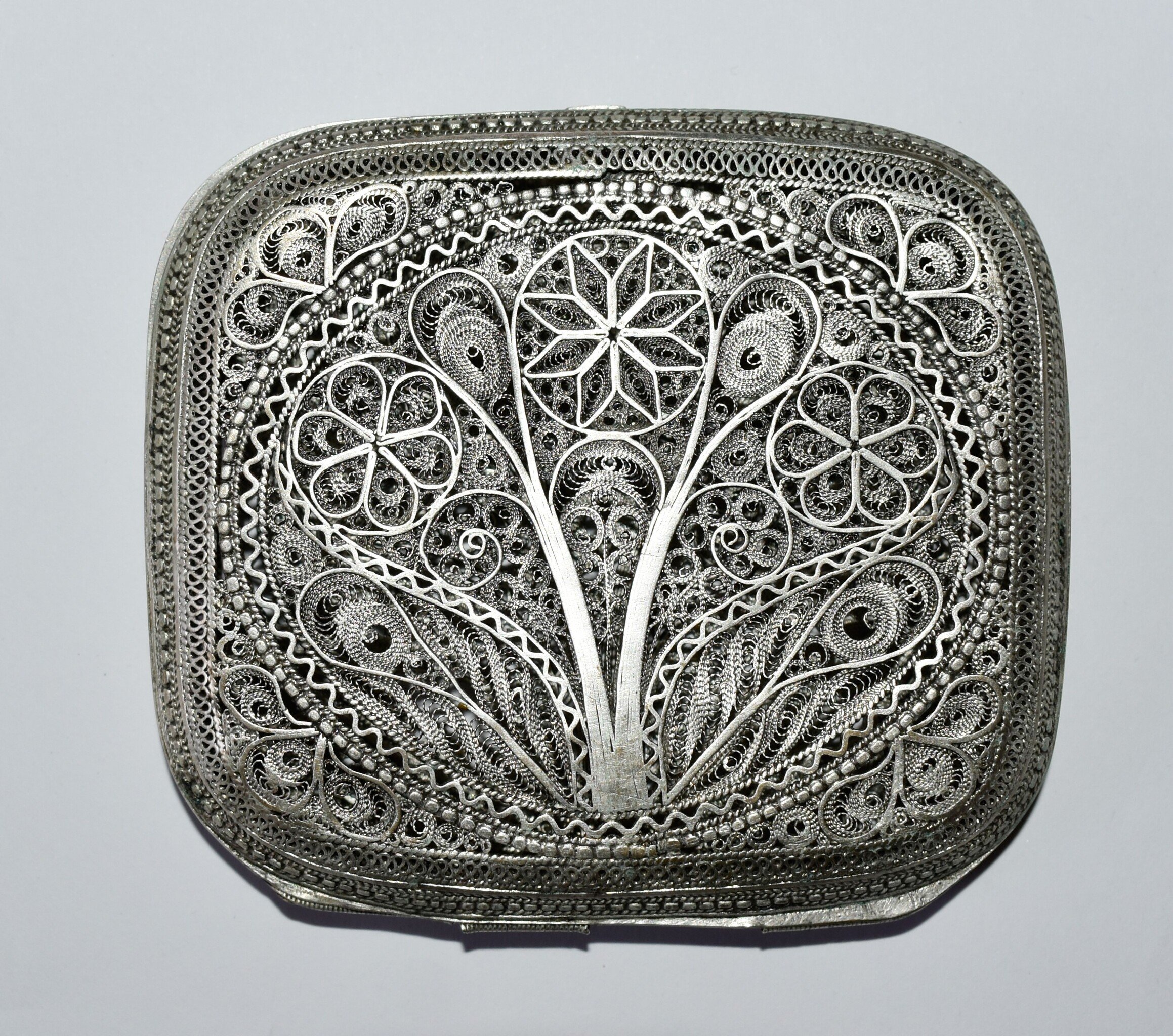
WORKS IN METAL FROM HOLDING OF ETHNOGRAPHIC COLLECTION OF HERITAGE MUSEUM IN PLJEVLJA
Prepeared by: Prof. Aida Abadžić Hodžić, PhD, Faculty of Philosophy in Sarajevo • Works selected: Ana Aranitović,Ethnography Department, Heritage Museum of Pljevlja

Ethnographic collection of Heritage Museum of Pljevlja holds a significant number of objects which document and illustrate high levels of Islamic culture in these regions. Pljev0lja had a significant place in the history of Islam in South Slavic regions as one of the biggest and the most significant administrative and economic centers of the Eyalet of Bosnia, the most protruding province of the European part of the Ottoman Empire. Upon the establishment of Ottoman administration, the nahiyah of Kukanj was instituted, with Pljevlja as the center; the nahiyah itself was named after the medieval fortified town of Kukanj, which was the summer residence of the Kosačas. In Ottoman sources Pljevlja was first mentioned in the summary list of Bosnian sanjak from 1469 as a “marketplace”, i.e. a square. Upgrading to a settlement of Oriental type began in the 1470s when Pljevlja, together with previous significant geostrategic and economic-trading position on the road to Dubrovnik and the capital, gained an increasingly great political significance. It reached the climax in the second half of the 16th century, when Pljevlja became the center of Herzegovina sanjak-bey and when the most significant waqif from Pljevlja Husein-pasha Boljanić founded a rich and significant waqf in Pljevlje and commissioned building of one of the most significant and the most beautiful mosques of the Ottoman period in these regions. By commissioning the mosque and many other buildings of religious, economic, educational and cultural significance in the second half of the 16th century Husein-pasha Boljanić made Pljevlja one of the most significant towns of Herzegovina sanjak.
Pljevlja was the home of many respectable Bosniak families, the members of which held very prominent positions within Ottoman administration. By means of preserved objects from their houses, some of which are held even today in the collection of Heritage Museum in Pljevlja, we can recreate the appearance and the way of life of Muslim population in this region, as well as recognize objects which, by virtue of Islamic culture, became part of general cultural goods and find their widespread use in daily life confirming, in this form as well, fruitful encounters of different cultures and traditions in these regions. The selected works in metal, with refined and complex decorations of vegetal ornaments, calligraphic writings and filigree techniques, testify of the significance of the idea of Beautiful in Islam, which permeates the design of both spaces and objects related to spaces of prayer, and the spaces and manifestations of daily life.
References:
Pelidija, Enes; Zlatar, Behija (1984), “Prilog kulturnoj istoriji Pljevalja osmanskog perioda – zadužbine Husein-paše Boljanića”, Prilozi za orijentalnu filologiju, no. 34, pp. 115-128.
Pelidija, Enes (2009), “Pljevlja i pljevaljski kraj u 18.stoljećuˮ, Istorija Pljevalja, Opština Pljevlja, pp. 147-175.







